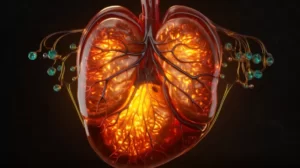An alarming increase in liver cancer cases has been observed among Americans, claiming the lives of over 21,000 people in the U.S. each year. However, you can lower your risk of developing this threatening condition by simply incorporating cardiovascular exercise into your daily routine. Research has shown that even something as simple as walking can lead to a significant reduction in the development of liver tumors.
The Power of Cardiovascular Exercise
A European study revealed that cardiovascular exercise can lower the risk of developing liver tumors. The researchers observed the effects of daily exercise on laboratory animals, which engaged in activities like running, walking, or biking for an hour a day. The results were quite promising, as the risk of liver cancer in these animals dropped by approximately 30 percent.
[table id=1 /]
Liver cancer accounts for approximately 5.4 percent of all cancers worldwide and is responsible for nearly 700,000 deaths each year, making it the fifth most common cause of cancer in men and the eighth most common cause in women. Engaging in cardiovascular exercise regularly can greatly reduce the likelihood of falling prey to this lethal condition.
Additional Benefits of Walking
Walking not only helps in lowering the risk of liver cancer, but it can also greatly benefit overall health. Walking regularly can help manage weight, regulate blood pressure, strengthen muscles and bones, improve mood, and increase energy levels. Additionally, walking has been shown to reduce anxiety, depression, and stress, as well as improve sleep quality and brain function.
By incorporating daily cardiovascular exercise into your lifestyle, you can enjoy all these benefits while reducing the risk of liver cancer.
Steps to Get Started with Walking
Making walking a part of your daily routine doesn’t require a lot of effort or a big lifestyle change. Follow these simple steps to get started:
- Choose the Right Footwear: Select a comfortable pair of walking shoes to provide proper support and cushioning for your feet.
- Make a Plan: Start by walking short distances, like around the block or at the park, and gradually increase the distance and duration as your stamina improves. Aim to walk at least 30 minutes to 1 hour daily.
-
Maintain Proper Posture: Keep your head up, back straight, and abdominal muscles slightly pulled in to maintain proper walking posture.
-
Warm-up and Cool-down: Spend about 5 minutes warming up by walking at a slower pace and stretching your muscles. After your walk, cool down slowly to allow your body to return to normal and decrease the risk of injury.
-
Stay Consistent: Make walking a habit by incorporating it into your daily schedule, and you’ll soon enjoy the benefits of improved health and a lowered risk of liver cancer.
Other Exercises to Lower Liver Cancer Risk
In addition to walking, other cardiovascular exercises that can help lower the risk of liver cancer include:
- Swimming: This full-body, low-impact workout can help tone muscles, improve cardiovascular fitness, and burn calories.
-
Cycling: Biking provides a fast-paced aerobic workout that can substantially improve physical and mental well-being. Beginners can start with a stationary bike and gradually progress to outdoor cycling.
-
Yoga: Practicing yoga regularly can enhance flexibility, strength, and relaxation, as well as – contribute to overall well-being. Specific yoga poses can also help detoxify the liver and improve its function.
-
Dancing: Dancing is a fun, effective workout that can strengthen muscles, improve balance and coordination, and offer an excellent cardiovascular workout.
Conclusion
The rising cases of liver cancer are indeed a cause for concern, but incorporating daily cardiovascular exercises like walking into your lifestyle can significantly lower the risk of developing this deadly disease. Moreover, walking provides numerous other health benefits that contribute to improved overall well-being. So, take that first step today and make a positive change for a healthier future.



![8 Simple Rules to Refresh Your Body with a Healthy Cleanse [See Pictures]](https://naturalhealthreserve.com/wp-content/uploads/2024/01/8-rules-healthy-cleanse-slideshow-300x168.webp)